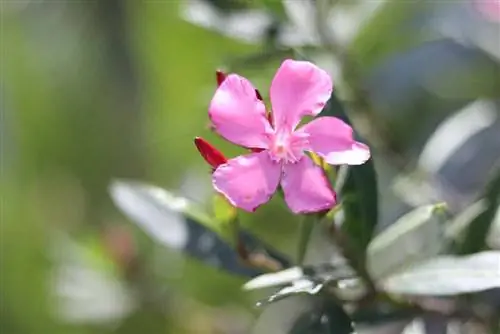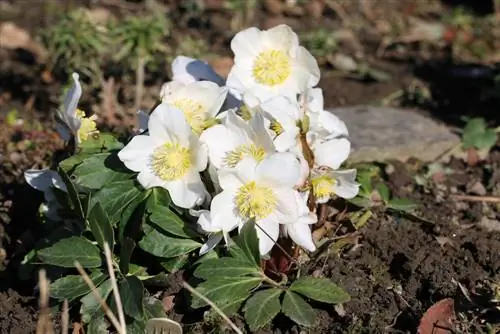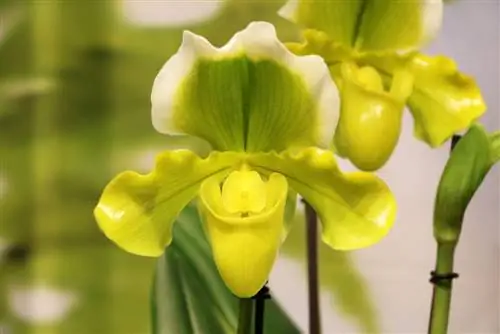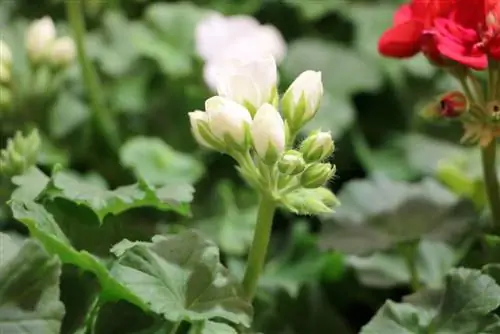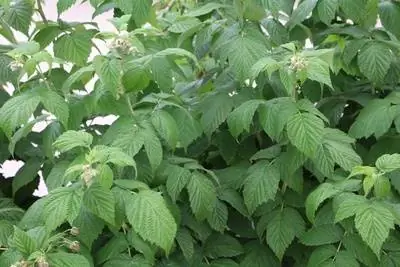- Author admin [email protected].
- Public 2023-12-17 03:39.
- Last modified 2025-06-01 06:48.
The oleander, also often called rose laurel, thrives particularly well under Mediterranean conditions. Not only does it need the right location, but it also needs to be fertilized regularly during its flowering and growth phase to ensure intensive flowering and lush green leaves. However, fertilizing the oleander only begins after it has been cleared out of its winter quarters. Under no circumstances should you fertilize in winter, as the plant is not active during this time and therefore does not need any nutrients.
When is fertilization done?
The oleander is best fertilized from the beginning of March to the end of September. At this time it is currently in its flowering and growth phase and therefore needs a lot of nutrients. The first fertilizer should only be applied when stronger, dark green leaves can be seen on the oleander. Because then he is really active. His active time begins shortly after clearing out. Now it needs strengthening nutrients for a good start to its growth period.
Tip:
Stop fertilizing at the end of September/beginning of October so that the oleander can prepare for its winter rest period. Its shoots must therefore be able to woody well.
How often is fertilization done?
The oleander or rose laurel is fertilized once or twice a week with liquid container plant or oleander fertilizer. If you don't have the time to fertilize weekly or think you might forget to do so often, then it's worth using a slow-release fertilizer. Depending on the manufacturer, this lasts 6 to 12 months and thus optimally supplies your oleander with the necessary nutrients.
The most important nutrients
Minerals always play a very important role in plant nutrition. This also applies to fertilizing the oleander. The nutrients can be divided into macro and micro minerals (trace elements).
Macrominerals
The macrominerals include the nutrients that the oleander needs most as a heavy feeder. These can be divided into primary and secondary nutrients.
- Primary nutrients: The primary nutrients, also known as the basic nutrients of plants, primarily include nitrogen (N), phosphorus (P) and potassium (K). These substances must be supplied to the oleander regularly. The fertilizers that contain these basic nutrients are called NPK fertilizers.
- Secondary Nutrients: Secondary nutrients include sulfur (S), magnesium (Mg), and calcium (Ca). There are actually enough of these nutrients in good garden or potted plant soil, so adding these substances is not always necessary. However, these nutrients are used up quickly, especially with oleander plants kept in containers, so these substances also need to be added regularly.
Microminerals
Microminerals (trace elements) are of utmost importance for the growth of the oleander. These include manganese (Mn), chloride (Cl), copper (Cu), iron (Fe), boron (Bo), zinc (Zn) and molybdenum (Mo). However, only very small quantities of them are required. Below is the meaning of the individual nutrients:
- Nitrogen (N): Nitrogen is particularly important for all parts of the oleander plant that grow above the ground. The absorbed nitrogen is incorporated into amino acids, which are the building blocks of chlorophyll, nucleic acids, proteins and vitamins. Nitrogen is not absorbed as a pure element, but primarily as nitrate (NO3-) or, in small quantities, as ammonium (NH4+) through the soil. An oversupply of phosphate can impair nitrate absorption. If there is too much calcium, potassium and magnesium, ammonium absorption is impaired.
- Phosphorus (P): Phosphorus is an important element for the process of photosynthesis and makes the oleander more resistant to stress. In addition, phosphorus supports root and flower growth.
- Potassium (K): Potassium promotes resistance to disease, supports photosynthesis and helps form important proteins.
- Magnesium (Mg): This nutrient is part of chlorophyll and is important for photosynthesis. In addition, the element helps activate important enzymes.
- Boron (Bo): The element boron influences the production of carbohydrates and sugars and is very important for seed production and maturation.
- Calcium (Ca): Calcium is considered an important component of the cell walls and ensures the transport of other nutrients.
- Sulfur (S): Sulfur is very important for protein production and supports the production of vitamins and enzymes. Sulfur also helps with chlorophyll production and root growth.
- Copper (Cu): Copper is a very important trace element for the reproductive growth of the oleander. The nutrient supports protein utilization and is stored in the root system.
- Molybdenum (Mo): This trace element helps with the absorption and utilization of nitrogen.
- Chloride (Cl): Chloride is an important component in the metabolism of all plants.
- Iron (Fe): Iron is an important factor in the production of chlorophyll.
- Zinc (Zn): Zinc supports the conversion of carbohydrates and regulates growth and the absorption of sugar.
- Manganese (Mn): The element manganese is an activator for important enzymes and promotes protein synthesis.
The best oleander fertilizers
Many hobby gardeners are of the opinion that fertilizing with compost and a touch of guano are enough to provide the oleander with additional nitrogen once it has been repotted into fresh potting soil in the spring. Some also use blue grain. However, stores have some special oleander fertilizers and other suitable fertilizers that you can use to ensure that your oleander thrives and produces many flowers. I have put together the best commercially available oleander fertilizers for you here.
Compo Basacote Plus 12M (long-term fertilizer, coated round grain)

This NPK fertilizer with trace nutrients is a coated slow-release fertilizer. Its effectiveness lasts up to 12 months. You can also combine this fertilizer with Triabon fertilizer from Compo. According to the manufacturer, the correct dosage of Compo Basacote Plus 12M for oleander is 5 g per liter of pot volume. The fertilizer works best at a temperature of 10° C and upwards. Composition:
- 15% - total nitrogen (7.0% NO3-N nitrate nitrogen + 8.0% NH4-N ammonium nitrogen)
- 12% K2O - water-soluble potassium oxide
- 8% P2O5 - water-soluble and neutral ammonium citrate-soluble phosphate
- 5% S - Total Sulfur
- 2% MgO - Total Magnesium Oxide
- 0, 4% Fe - Iron
- 0.06% Mn Manganese
- 0.05% Cu - Copper
- 0.02% B - Boron
- 0.02% Zn - Zinc
- 0.015% Mo - Molybdenum
Tip:
Work this slow-release fertilizer into the pot soil and then cover it with fresh soil. When repotting, mix the majority of the fertilizer that you measured out according to the manufacturer into the container plant soil and work the rest in superficially.
Triabon Compo (granules)
These granules last for 3 to 4 months. Its effectiveness lasts even at low temperatures. Composition:
- 16% N - total nitrogen (11% crotonylidene diurea + 5% ammonium nitrogen)
- 12% K2O - water-soluble potassium oxide
- 9% S - Total Sulfur
- 8% P2O5 -neutral ammonium citrate-soluble and water-soluble phosphate
- 4% MgO - Total Magnesium Oxide
- 0, 10% Fe - Iron
- 0, 10% Mn - Manganese
- 0.04% Cu - Copper
- 0.02% B - Boron
- 0.015% Mo - Molybdenum
- 0.007% Zn - Zinc
COMPO Mediterranean plant fertilizer (liquid fertilizer)
This liquid fertilizer is a low-chloride fertilizer and contains an extra portion of potassium and iron to prevent leaf yellowing (chlorosis). Composition:
- 7% N - total nitrogen (3.4% nitrate nitrogen + 3.6% ammonium nitrogen)
- 6% P2O5 - water-soluble phosphate
- 5% K2O - water-soluble potassium oxide
- 1% S - water-soluble sulfur
- 0.01% B - water-soluble boron
- 0.05% Fe water-soluble iron as a chelate of EDTA
- 0.002% Cu - water-soluble copper as a chelate of EDTA
- 0.002% Zn -water-soluble zinc as a chelate of EDTA
- 0.02% Mn water-soluble manganese as a chelate of EDTA
- 0.001% Mo water soluble molybdenum
Green24 oleander fertilizer (liquid fertilizer)
This oleander fertilizer is suitable for watering and spraying and is administered at intervals of 7 to 14 days. Composition:
- 6% N - nitrogen content
- 4% P - phosphate content
- 6% K - potassium content
- Manganese, boron, iron, copper, zinc and molybdenum from high-quality chelate complexes from EDTA
Tip:
It is best to mix the fertilizer for leaf fertilizing the oleander with lime-free water so that it can work better.
Conclusion
In the spring after clearing out, the oleander becomes active again. As soon as you notice darker and stronger leaves on it, you can start fertilizing for the new season. If you only want to fertilize once or twice a year, it is best to use a long-term fertilizer (depot fertilizer). If you use liquid fertilizer, you will need to fertilize more often. This can sometimes get out of hand. But over-fertilization is actually hardly possible because the oleander needs a lot of nutrients. If it does happen to you, simply wash the fertilizer out of the substrate.
What you should know about oleander fertilizer in brief
Oleander is characterized by the fact that it has a very high need for nutrients and therefore must be supplied with sufficient fertilizer during the growth and flowering phase. Fertilization begins immediately after clearing out, which is carried out in spring. The fertilization phase ends at the beginning of September at the latest. You should not fertilize the oleander later in autumn because growth does not stop during this time. However, fertilization would prevent the shoots from maturing properly and would then remain soft. To ensure a certain degree of frost hardiness, it is very important that the shoots mature well and become woody. Fertilization should especially not be carried out in winter. At this time of year the plants are not active and therefore do not consume any nutrients. Only in spring does the oleander begin to become active again, which can be seen from the leaves becoming greener and stronger. Now is the right time for fertilization:
- Blue grain or a slow-release fertilizer is used depending on the size of the plant.
- The latter should have a lasting effect of six to twelve months and is available in garden shops or on the Internet.
- The fertilizer is put into the bucket and dug up a little. Then fresh earth is added.
- In addition, you can also use lime fertilizer and possibly also a potash fertilizer. This makes the shoots stiffer and more stable.
- If you fertilize with blue grain, the process is repeated in mid-July and mid-August.
More fertilization is basically not necessary for the oleander. Compared to many other plants, oleander can hardly be over-fertilized. If you have overdone it with the fertilizer, you can tell by the brown and dry edges of the leaves. In this case, you should flush the fertilizer out of the soil with water. To do this, simply remove the saucer so that all the water can drain out of the pot. You should then stop fertilizing until the leaves have recovered.

